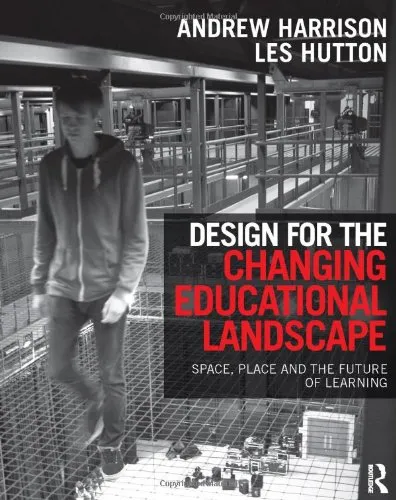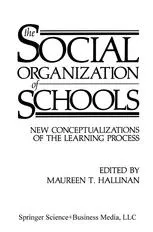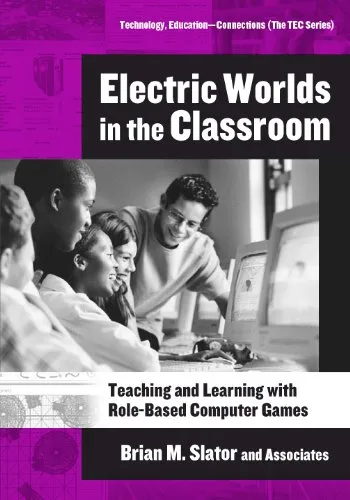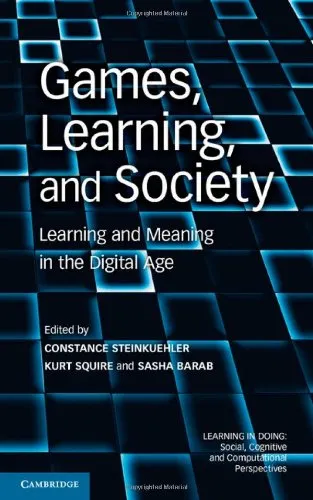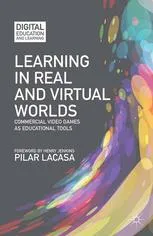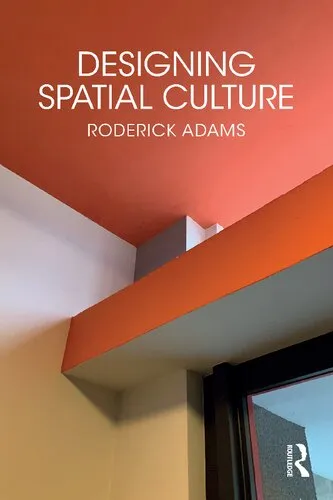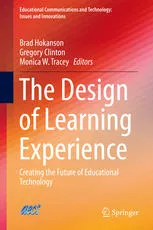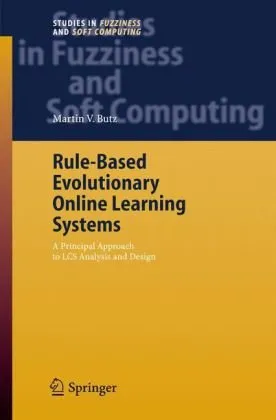Design for the Changing Educational Landscape: Space, Place and the Future of Learning
4.5
بر اساس نظر کاربران

شما میتونید سوالاتتون در باره کتاب رو از هوش مصنوعیش بعد از ورود بپرسید
هر دانلود یا پرسش از هوش مصنوعی 2 امتیاز لازم دارد، برای بدست آوردن امتیاز رایگان، به صفحه ی راهنمای امتیازات سر بزنید و یک سری کار ارزشمند انجام بدینکتاب های مرتبط:
معرفی کتاب "Design for the Changing Educational Landscape: Space, Place and the Future of Learning"
کتاب Design for the Changing Educational Landscape: Space, Place and the Future of Learning نوشته Andrew Harrison و Les Hutton، یکی از منابع کلیدی و الهامبخش در حوزه طراحی فضاهای آموزشی است. این کتاب با تمرکز بر مفاهیم space و place، رویکردهای نوینی را در زمینه طراحی محیطهای یادگیری ارائه میدهد. با توجه به تغییرات سریع در سیستمهای آموزشی و نیاز به انعطافپذیری در فضاهای یادگیری، این کتاب به بررسی تأثیر طراحی محیط بر شیوه آموزش و یادگیری میپردازد.
خلاصهای از کتاب
این کتاب درک کاملی از نقش فضاهای یادگیری در حمایت از شیوههای آموزشی مدرن ارائه میدهد. نویسندگان به بحث در مورد چرایی و چگونگی طراحی ساختمانهای آموزشی میپردازند و به عوامل متعدد دسترسی، انعطافپذیری، و کارایی توجه ویژه دارند. آنان توضیح میدهند که چگونه تغییرات اجتماعی، اقتصادی و فناوری، نیازمند سازگاری فضاهای فیزیکی آموزشی است. با تمرکز بر اهمیت pedagogy-driven design، این اثر نشان میدهد که چگونه محیطهای یادگیری باید فرصتهایی برای تعامل بیشتر، یادگیری مشارکتی و خلاقیت ارائه دهند. در این اثر، داستانها و مثالهایی از پروژههای واقعی آورده شده است که نشاندهنده موفقیت رویکردهای نوآورانه در طراحی فضاهای آموزشی هستند.
مهمترین نکات کتاب
- فضاهای یادگیری انعطافپذیر نیازمند هماهنگی با روشهای یادگیری نوین هستند.
- طراحی باید با در نظر گرفتن نیازهای مختلف دانشآموزان، معلمان و جامعه صورت گیرد.
- استفاده از فناوری در فضاهای آموزشی باید به گونهای باشد که تعامل و یادگیری را تقویت کند.
- شروع طراحی از نیازهای pedagogical و نه صرفاً زیباییشناختی، کلید موفقیت است.
جملات برگزیده از کتاب
"Learning environments need to evolve, just as education systems themselves do."
"Designing for education is about designing for people—not just for today, but for their futures."
"True innovation in educational spaces comes from understanding the connection between pedagogy and space."
چرا این کتاب مهم است؟
در دنیای امروز، که تغییرات گسترده دیجیتالی و اجتماعی، شیوههای یادگیری دانشآموزان را دگرگون کرده است، فضاهای فیزیکی آموزشی میتوانند تأثیر عمیقی بر مشارکت و موفقیت یادگیری داشته باشند. کتاب Design for the Changing Educational Landscape به عنوان مرجعی بینظیر، به معماران، طراحان، مدیران آموزشی و سیاستگذاران کمک میکند تا بینشی جامع و کاربردی در زمینه طراحی مؤثر داشته باشند. این اثر علاوه بر تئوری، رویکردهای عملی و مستنداتی از پروژههای موفق ارائه میدهد که میتوانند در ایجاد فضاهای آموزشی برتر الهامبخش باشند.
Introduction to 'Design for the Changing Educational Landscape: Space, Place and the Future of Learning'
In an era where education is evolving rapidly, the environments where learning takes place are undergoing a remarkable transformation. 'Design for the Changing Educational Landscape: Space, Place and the Future of Learning' by Andrew Harrison and Les Hutton explores the critical relationship between educational philosophy, technological innovation, and spatial design. This book is a comprehensive guide to understanding how physical and digital spaces need to adapt to meet the needs of modern learners in an ever-changing world.
Rooted in interdisciplinary insights, the book provides a detailed exploration of how design principles can shape educational environments that inspire creativity, collaboration, and innovation. Aimed at educators, architects, designers, and policymakers, this book emphasizes that the future of education is not only about content but also about the context and environment in which learning takes place. By addressing topics ranging from classroom design to virtual spaces, the authors deliver a thought-provoking analysis of what it takes to create places that truly support education in the 21st century.
Detailed Summary of the Book
The book encompasses the changing dynamics of educational space design, presenting ideas and strategies that align physical spaces with the evolving demands of learners in the digital age.
The authors begin by examining the historical development of educational spaces, shedding light on how traditional classrooms no longer meet the diverse needs of today’s students. The text then shifts to highlight the integration of technology, pedagogical shifts, and flexible designs in modern learning environments. It emphasizes blended learning spaces, active learning classrooms, and how digital transformation influences the design of educational institutions.
Another key focus is the consideration of inclusivity, sustainability, and accessibility as fundamental components of spatial design. By exploring real-world case studies and providing actionable insights, the book takes the reader on a journey through future-focused recommendations that prioritize adaptability. Whether it's libraries becoming collaborative "makerspaces" or schools incorporating virtual reality for immersive learning, the book weaves theory with practice to portray a comprehensive vision of the future landscape of education.
Key Takeaways
- Educational space design must adapt to promote collaboration, creativity, and critical thinking.
- Technology is no longer optional; it plays an integral role in shaping the future of how and where learning happens.
- Flexibility is key. Environments should support formal, informal, physical, and virtual learning interactions.
- Inclusivity and sustainability are essential priorities for 21st-century educational spaces.
- Designing for the future requires attention to the interplay between pedagogy, technology, and space.
Famous Quotes from the Book
"Learning is no longer confined to the four walls of the classroom. It is a dynamic, interactive process that requires equally dynamic environments."
"Designing for education is not about buildings. It is about creating places where people can connect, innovate, and grow."
"To design for the future of learning, we must first understand that change is constant, and adaptability is essential."
Why This Book Matters
Educational institutions play a pivotal role in shaping the future of our societies. As the world undergoes unprecedented social, technological, and environmental changes, the way we learn, teach, and interact in educational spaces must also transform. This book matters because it serves as an essential resource for creating learning environments that respond to these changes effectively.
'Design for the Changing Educational Landscape' equips readers with the knowledge to reimagine educational spaces in a way that aligns with the needs of modern learners and educators. By presenting forward-thinking perspectives on space and place, the book ensures that education remains meaningful, efficient, and inclusive in the 21st century.
Ultimately, this book matters because it bridges the gap between theory and practice, offering tangible strategies to create spaces that support the evolving goals of education. It inspires architects, educators, and stakeholders alike to innovate and collaborate in shaping the future of learning environments that are as diverse and dynamic as the learners themselves.
دانلود رایگان مستقیم
شما میتونید سوالاتتون در باره کتاب رو از هوش مصنوعیش بعد از ورود بپرسید
دسترسی به کتابها از طریق پلتفرمهای قانونی و کتابخانههای عمومی نه تنها از حقوق نویسندگان و ناشران حمایت میکند، بلکه به پایداری فرهنگ کتابخوانی نیز کمک میرساند. پیش از دانلود، لحظهای به بررسی این گزینهها فکر کنید.
این کتاب رو در پلتفرم های دیگه ببینید
WorldCat به شما کمک میکنه تا کتاب ها رو در کتابخانه های سراسر دنیا پیدا کنید
امتیازها، نظرات تخصصی و صحبت ها درباره کتاب را در Goodreads ببینید
کتابهای کمیاب یا دست دوم را در AbeBooks پیدا کنید و بخرید
1181
بازدید4.5
امتیاز50
نظر98%
رضایتنظرات:
4.5
بر اساس 0 نظر کاربران
"کیفیت چاپ عالی بود، خیلی راضیام"
Questions & Answers
Ask questions about this book or help others by answering
No questions yet. Be the first to ask!
